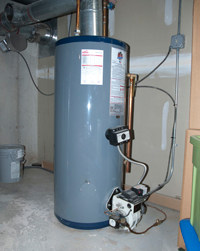How do you really feel when it comes to Water Heater Maintenance Tips You Can't Afford to Forget?

Hot water is important for day-to-day comfort, whether it's for a revitalizing shower or washing meals. To ensure your warm water system runs successfully and lasts longer, routine upkeep is vital. This article offers functional ideas and understandings on how to keep your home's hot water system to stay clear of disruptions and pricey repairs.
Introduction
Preserving your home's warm water system could seem complicated, but with a few straightforward steps, you can guarantee it runs smoothly for many years to come. This overview covers every little thing from comprehending your warm water system to do it yourself maintenance ideas and recognizing when to contact expert aid.
Significance of Preserving Your Warm Water System
Regular maintenance not just extends the life-span of your hot water system yet also ensures it operates successfully. Ignoring upkeep can bring about lowered performance, greater energy expenses, and also premature failing of the system.
Indicators Your Hot Water System Requirements Upkeep
Knowing when your warm water system requires attention can stop significant issues. Watch out for indications such as inconsistent water temperature level, strange noises from the heating system, or corroded water.
Understanding Your Warm Water System
Prior to diving into maintenance tasks, it's valuable to recognize the standard parts of your warm water system. Typically, this consists of the hot water heater itself, pipelines, anode poles, and temperature controls.
Monthly Upkeep Tasks
Regular month-to-month checks can assist catch small problems before they rise.
Flushing the Hot Water Heater
Flushing your water heater gets rid of sediment build-up, enhancing efficiency and lengthening its life.
Monitoring and Changing Anode Rods
Anode poles stop deterioration inside the storage tank. Checking and changing them when worn is important.
Inspecting and Changing Temperature Setups
Adjusting the temperature level settings makes sure optimal efficiency and safety.
Do It Yourself Tips for Maintenance
You can do several upkeep jobs yourself to maintain your hot water system in leading condition.
Looking for Leaks
On a regular basis evaluate pipes and links for leaks, as these can cause water damage and higher bills.
Examining Stress Relief Valves
Testing the stress safety valve ensures it functions appropriately and stops extreme pressure build-up.
Protecting Pipes
Shielding warm water pipes reduces warmth loss and can save energy.
When to Call a Specialist
While DIY maintenance is valuable, some issues need specialist proficiency.
Complex Problems Calling For Specialist Help
Examples consist of significant leaks, electrical problems, or if your water heater is constantly underperforming.
Routine Specialist Maintenance Conveniences
Professional upkeep can include detailed evaluations, tune-ups, and making certain compliance with safety and security requirements.
Conclusion
Routine maintenance of your home's warm water system is essential for effectiveness, longevity, and price financial savings. By complying with these ideas and understanding when to look for expert help, you can guarantee a dependable supply of warm water without unforeseen disruptions.
How to Maintain an Instant Hot Water Heater
Before tinkering with your hot water heater, make sure that it’s not powered on. You also have to turn off the main circuit breaker and shut off the main gas line to prevent accidents. Also turn off the water valves connected to your unit to prevent water from flowing into and out of the appliance. 2. When you’re done, you have to detach the purge valves’ caps. These look like the letter “T†and are situated on either side of the water valves. Doing so will release any pressure that has accumulated inside the valves while at the same time avoid hot water from shooting out and burning your skin. 3. When the purge valves’ caps are removed, you have to connect your hosing lines to the valves. Your unit should have come with three hoses but if it didn’t, you can purchase these things from any hardware or home repair shops. You can also get them from retail stores that sell water heating systems. Read the user’s manual and follow it to complete this task properly. When the hosing lines are connected, open the purge port’s valves. 4. You should never use harsh chemical cleaners or solutions when cleaning your unit. Make use of white vinegar instead. It should be undiluted and you’ll probably use about 2 gallons. 5. Now flush your water heater. This task should probably take about 40 minutes. We can’t give you specific directions for this because the procedure is carried out depending on the type, model and brand of your heater. With that being said, refer to the user’s manual. 6. When you’re done draining the unit, you have to turn off the purge port valves again. Remove the hosing lines that you earlier installed on each of the water valves. Put the valve caps (purge port) back in their respective places and be very careful so as not to damage the rubber discs that are found inside these caps. 7. Now that everything’s back in place, check your user’s manual again to find out how to reactivate your water heating system. 8. Once it is working, turn one of your hot water faucets on just to let air pass through the heater’s water supply pipes. Leave the tap on until water flows smoothly out of it. https://www.orrplumbing.com/blog/2014/september/how-to-maintain-an-instant-hot-water-heater/

I am just very involved in How to Maintain a Hot Water Heater in a Few Simple Steps and I hope you enjoyed the new piece. Sharing is caring. Helping people is fun. Thanks for being here. Return soon.
Services